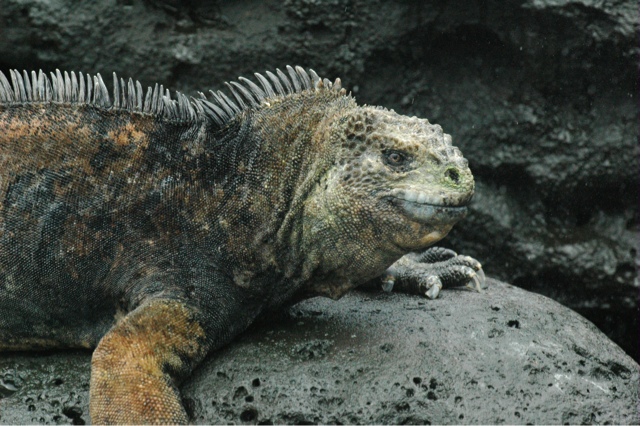We have landed to Galapagos on the most easterly island and geologically one of the oldest islands, San Cristobal. All the islands in the Galapagos are a result of volcanic activity caused by the movement of the Nazca plate and you will see the terrain is scattered with volcanic rock.
San Cristobal is 558 square kilometers and its highest point rises to 730 meters. The Laguna El Junco in the crater of one of the volcanos provides fresh water to the island. San Cristobal is also the island on which Charles Darwin first landed even though the Charles Darwin Research Center is located on Isla Santa Cruz.
The first animals we saw on arrival were the Sea Lions. They are literally everywhere, sleeping on park benches, dinghies, docks and sidewalks. But, today I will share some pictures of the Marine Iguanas.
.
The Marine Iguana is unique to The Galapagos. These swimming iguanas seek its food from the sea, diving down as far as 30 feet. The salt ingested from its diet of seaweed and algae is filtered from the blood through a nasal gland. They will spend hours basking on the black volcanic rocks soaking up the sun and on a closer inspection look about as ancient as the rocks they are sitting on. I got a little too close to one and he snorted a salty stream of snot at me. Very funny.
We expect to see more marine iguanas of various sizes and colors as they are on several of the islands here. You'll notice that they all look quite different, with faces that are almost human. Well, maybe not quite human, but rather cute.







No comments:
Post a Comment